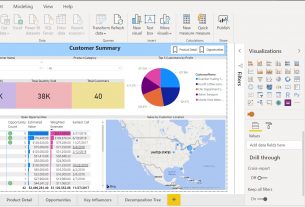As businesses continue to rely on digital tools and platforms to store and process data, it’s becoming increasingly important for them to have a reliable and secure cloud infrastructure. One option that’s gaining traction in the market is Microsoft Azure, a cloud computing platform and infrastructure created by Microsoft for building, deploying, and managing applications and services through a global network of data centers.
If you’re considering moving your data to Azure, there are several key considerations you’ll need to keep in mind. Below, we’ll outline the key steps involved in a successful data migration to Azure, as well as some best practices to follow along the way.
Step 1: Assess Your Current Data Environment
Before you start the process of migrating your data to Azure, it’s important to take a comprehensive inventory of your current data environment. This includes understanding the types of data you have, where it’s stored, and how it’s being used.
Step 2: Plan Your Migration Strategy
Once you have a clear understanding of your current data environment, you can start planning your migration strategy. There are several different approaches you can take, depending on your needs and resources.
Step 3: Choose the Right Tools and Technologies
There are a wide range of tools and technologies available to help you migrate your data to Azure. Some common options include:
- Azure Data Factory: A fully managed data integration service that allows you to create, schedule, and orchestrate data pipelines.
- Azure Database Migration Service: A fully managed service that helps you migrate databases to Azure with minimal downtime.
- Azure Site Recovery: A disaster recovery service that helps you protect your on-premises and Azure-based workloads.
Step 4: Execute Your Migration
Once you have a solid plan in place and the right tools and technologies selected, it’s time to execute your migration. This process can vary depending on the size and complexity of your data environment, but there are a few key best practices you should follow to ensure a smooth and successful migration:
- Test your migration before going live: It’s important to thoroughly test your migration to ensure that everything is working as expected
- Monitor your migration closely: Be sure to monitor your migration closely to identify any issues or problems that may arise. This could include monitoring key performance metrics, such as data transfer speeds and resource utilization.
Partnering with Dedicatted for a Seamless Transition to Azure
Migrating your data to Azure can be a complex and time-consuming process, but it can also provide significant benefits in terms of performance, security, and cost-efficiency. By following the steps outlined above and working with a trusted partner like Dedicatted, you can ensure a smooth and successful migration to Azure.



